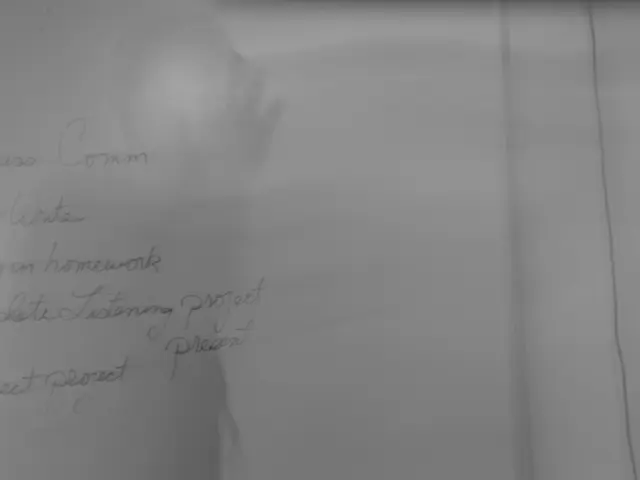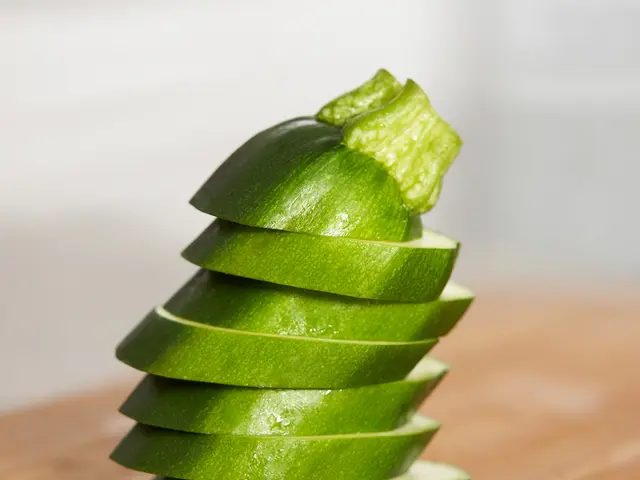Let's Make a Carbon Snake! 🔥🐍
Unconventional Biological Combination: Investigation into Carbon, Sugar, and Snake Consortium
Crafting a carbon snake is an awesome chemistry experiment that'll have you gasping and learning about reactions, heat, and gas formation - all in your own backyard or outdoor classroom. This is what we like to call the "Carbon Sugar Snake Experiment", and it's a buzzing hit among young scientists aged 8-12.
🤔 Here's what you'll be studying: Chemical reactions, combustion, decomposition, gas formation, physical vs. chemical changes, and exothermic reactions.
So gather 'round, put your safety goggles and lab coats on (optional!), and get ready to ignite some science action!
✨ Follow these steps, and you'll soon see sugar combusting like a pro:
- Pour 1-2 cups of dry sand into the bottom of a shallow dish or aluminum pie tin.
- Mix 4 tablespoons of sugar with 1 tablespoon of baking soda (or sodium bicarbonate) in a small bowl.
- Scoop the sugar-baking soda mixture into a mound or pile right in the middle of the sand.
- With an adult's help, carefully pour some lighter fluid over the pile to soak it thoroughly.
- With an adult's help, ignite the mixture with a lighter.
- Watch the magic unfold as the black carbon snake rises, twists, and grows!
- Once the reaction is complete, pour water over the dish to extinguish and let everything cool down before disposing.
🔍 Want more splendid science experiments for kids? View our top picks here
🛑 Safety first: Always remember to perform science experiments under adult supervision, and ensure you have the necessary safety equipment like goggles and flame-resistant gloves.
What's Going On in This Crazy Reaction? 🧪🧬⚛️
The recipe for this extraordinary chemical reaction includes pretty basic ingredients - sugar and baking soda. Combine them with heat, and you get a spectacular snaky explosion! But why? Let's dive into the sciencey stuff:
- The sugar-baking soda mixture is ignited by the lighter fluid, causing a thermal decomposition of sugar. This heating process causes the sugar to melt, burn, and decompose into solid carbon, water vapor, and hot gases like carbon dioxide.
- The heat from the burning sugar also triggers the decomposition of baking soda into carbon dioxide gas, water vapor, and sodium carbonate.
- The heat created from this exothermic reaction builds up pressure that pushes the growing, twisting snake form upward and out of the sand.
- The leftover materials you see are solid elemental carbon (the black snake) and sodium carbonate (a white powdery substance).
Thanks to this carbon snake experiment, you'll learn about chemical reactions, combustion, decomposition, gas formation, and much more. Plus, you'll have a blast doing it! 🚀🦖🐍
References:- [1] Science Kids - Carbon Dioxide Facts- [2] ThoughtCo - Carbon Snake (Sugar Snake) Science Experiment- [3] Science Bob - Carbon Sugar Snake Experiment- [4] Science Sparks - Carbon Sugar Snake- [5] Science Project Ideas - Carbon Sugar Snake
- This carbon snake project is an engaging activity for kids, immersing them in chemistry, physics, and science education and self-development.
- As young scientists, they'll discover chemical reactions, combustion, decomposition, gas formation, and the difference between physical and chemical changes.
- The Carbon Sugar Snake Experiment is a fascinating addition to projects in art and engineering, as kids can enjoy the fun of creating something while learning about science.
- For additional brilliant science experiments for kids, you can find a list of top picks online.
- To ensure a safe and enjoyable learning experience, always supervise science experiments and use appropriate safety equipment like goggles and flame-resistant gloves.
- This experiment is an excellent opportunity for children at the ages of 8-12 to learn about exothermic reactions and the principles of engineering and physics.
- To create the carbon snake, kids can follow printables and instructions, pouring sugar and baking soda into a mound and igniting it with lighter fluid.
- Following the experiment, they can discuss their observations and reflect on what they've learned, deepening their understanding of chemical processes.




